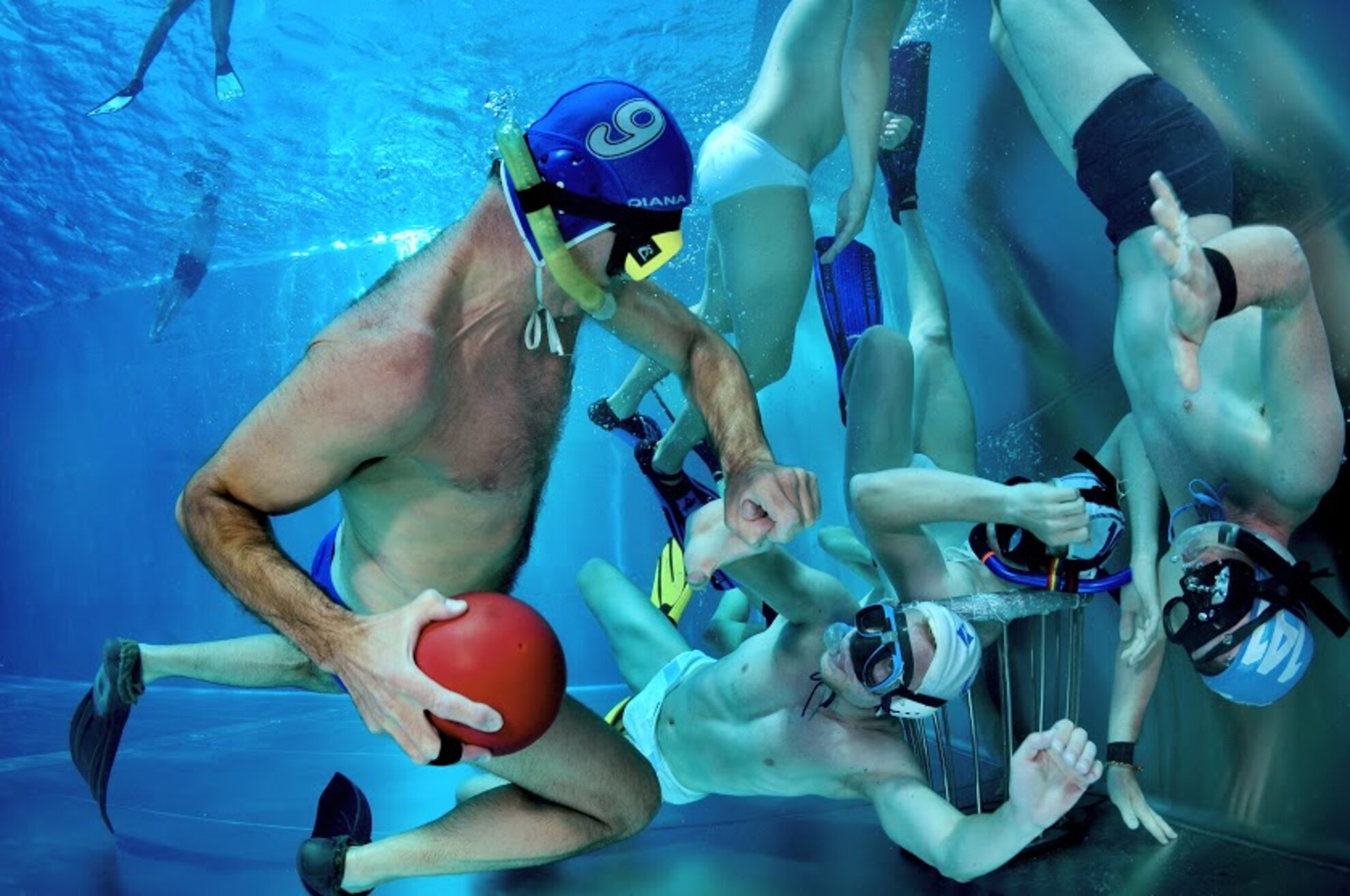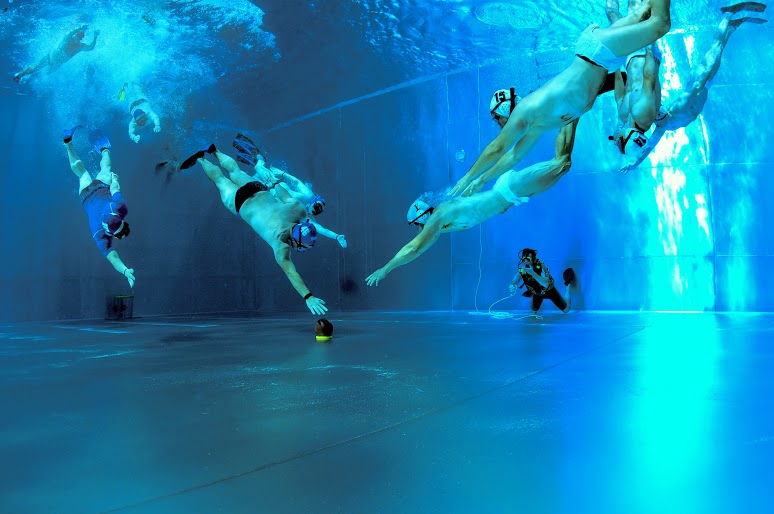Nowadays, it's harder to invent a new sport than it is for the Hungarian soccer team to qualify for the World Cup, but there is still the option of mixing two or more sports. Underwater rugby is one of those hybrids. Despite the fact that an earlier version was already played in the early 1900s and that the current version has been played since the '60s, probably 99.9% of Earth's population hasn't yet heard of it. Nonetheless, in Budapest, a bunch of people play it twice a week. Zoltán Kalácska, one of the ambassadors of this sport, helped us immerse ourselves in it.
There were two underwater sports developed at about the same time in two different countries, resulting in different evolutionary courses. One is underwater hockey, played in traditional swimming pools, while the other is underwater rugby, played in deeper diving pools to suit the three-dimensional nature of the game. Both of them are played in Hungary as well. What's more, this country has about four or five successful underwater-hockey teams.

What is this sport exactly? It is an unbelievably captivating sport that relies heavily on tactics and positioning, with an immense amount of passing and body-to-body action. It is often compared to basketball, since the play also requires depth. It is the little brother of water polo, but it is faster, tougher, more spectacular, and more intense, thanks in part to the fins that help participants move about 1.5 times faster.
Since the ball weighs as much as a medicine ball, it keeps players in shape, while the chance of injuries is low thanks to the blunting effect of water. Players spend significantly shorter (but more intense) periods underwater than free divers, but in the optimum case, they only take 2-3 deep breaths above water, to avoid any problems.

Sports where both genders can play simultaneously are scarce, but underwater rugby is one of them. Zoltán explained that players range from high-school students, through to their mums to white-haired gentlemen. It might sound surprising, at first, but they could beat a team of professional water polo players.

"Success, of course, takes proper teamwork in addition to individuals' capabilities. It might be one of the most exciting future sports, once technical difficulties are solved, since underwater rugby is not easy to sell and take close to the audience," says Zoltán.
This is a key point.
Those who want to follow a game closely, must dive to the bottom of the pool with the players.
"There must be systems developed soon that can broadcast the games reliably, transmitting the atmosphere, making supporting a team possible. Unfortunately, the current trend of using a webcam is not enough, although at least it's something. There won't be sponsors unless the games can be documented."

Underwater rugby is played in 27 countries and gained popularity with practically no support, making it a real underground sport. In Hungary, only a few dozen players put on the fins to practice this hobby that produces scenes worthy of a slapstick comedy. The number of players is decreasing, and although the diving association's attitude is exemplary, their ability to help is limited. There is no financial support, so the sport is self-financed from training to competition. Budapest has as many official teams as Parliaments (one), but in this way, at least they are unbeatable.

The only underwater hockey club in Budapest was founded in around 2006 by a military divers' company. The members today include an underwater hockey player, a water polo player, a swimmer, and a finswimmer – they train twice a week, but it's not enough for serious results. They regularly participate in the Czech UWR League (in the second division) that combines nearby countries.

If you want to try your hand at underwater rugby, just take a deep breath and contact Zoltán and the others, and join them at Hajós Alfréd Swimming Pool on Margaret Island, where you can participate in training twice a week for 7,000 HUF/month. They will help you learn the ropes and lend you equipment so that you can try the sport




